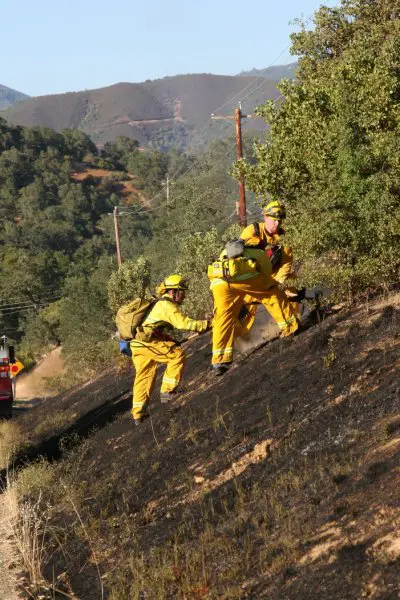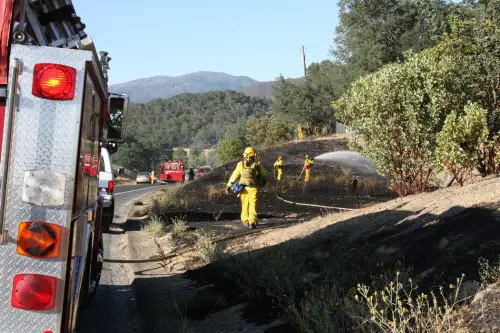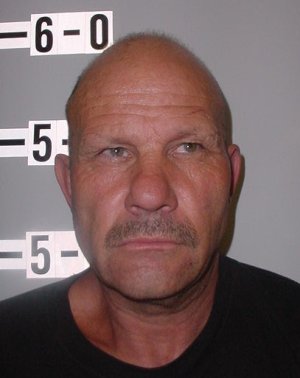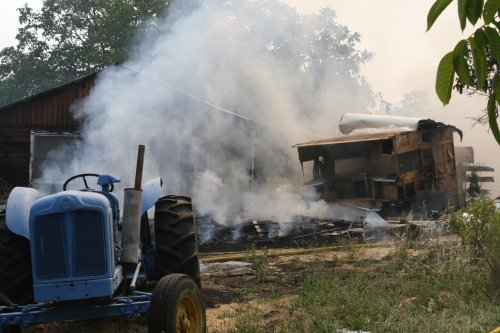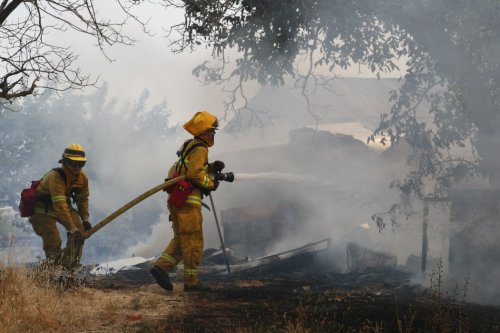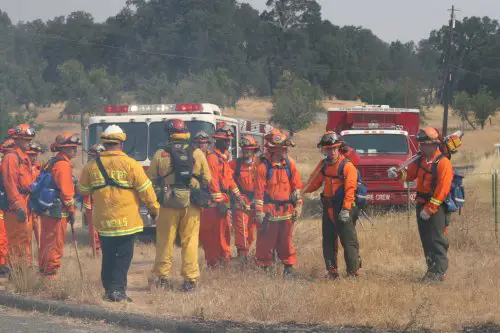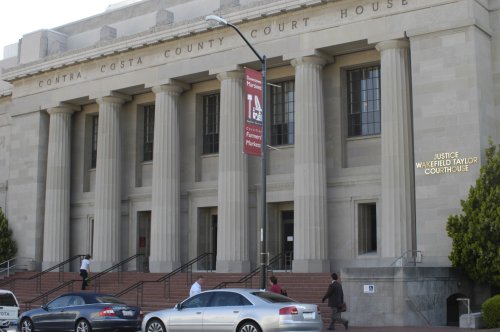- Elizabeth Larson
- Posted On
Habematolel Pomo casino plans get federal approval
The US Department of the Interior's Office of the Secretary has issued a “finding of no significant impact” – or FONSI – on the tribe's proposal to place an 11.24-acre site on Highway 20 in trust, said the tribe's attorney, Robert Rosette.
The Bureau of Indian Affairs approved the finding based, it said, on analysis and recommended mitigation measures in a May 2007 draft environmental assessment, as well as comments from the public, responses to those comments, the tribe's request for a reduction in acreage and the development of a final environmental assessment.
Rosette said the FONSI is an important legal entitlement that will allow the 200-member tribe to proceed with building a casino on its land next to the Upper Lake County Park.
Tribal members were “elated” by the news that BIA was approving placing the land in trust, said Rosette.
“It's a significant victory in the grand scope of their project,” he said. “Emotionally, as well, it means an awful lot to this tribe to reestablish their land base.”
The last thing the tribe must do before it can break ground on the casino is to get an approved tribal gaming compact with the state, said Rosette. “That's certainly a priority now.”
Negotiating with Gov. Arnold Schwarzenegger for that compact hinged on the FONSI, since Schwarzenegger has had a policy of not negotiating with tribes unless their land already was in trust, said Rosette. The federal government must then approve the compact.
Rosette said there's an outside chance the tribe – which already has had preliminary meetings with representatives from the governor's office – might be able to have a compact ready to be approved by the state Legislature before it adjourns for its fall break in mid-September.
That could put the tribe on track to break ground on the $35 million casino project in the first part of 2009, which Rosette called “a best-case scenario.”
He estimated construction will take between a year and 18 months to complete.
Once finished, the facility will create 250 jobs, said Rosette. One of the tribe's main reasons for pursuing the casino is to provide jobs for tribal members. However, most of the jobs will be available to Lake County residents, since many of the tribal members don't live in the area, he said.
Rosette said the tribe has entered into an agreement with Luna Gaming Upper Lake LLC, a Michigan-based gaming management company that is funding the project.
The company is involved with Indian casinos including Rolling Hills Casino in Corning and Little River Casino Resort in Manistee, Mich., besides having commercial gaming interests in Detroit and operating Cal Neva Resort in Lake Tahoe, according to its Web site. Luna Gaming also is working on casino development projects with Oklahoma's Kiowa tribe and the Ewiiaapaayp Band of Kumeyaay Indians in San Diego.
Rosette said the Habematolel casino will be a “class 3” Las Vegas-style establishment, with 20,000 square feet of gaming space featuring 349 slot machines as well as blackjack and other card games.
Phase one of the project also will include a restaurant and bar, said Rosette. Phase two of the project may include a small, 200-room hotel, which the tribe included in its environmental impact report and which the federal government approved.
To supply water to the casino, the tribe will dig its own well, said Rosette.
The tribe at one point had considered annexing to the Upper Lake County Water District, as Lake County News has reported. In October 2007, the tribe paid the district more than $7,700 for an engineering study that explored hooking the casino into the district as well as other alternatives
FONSI is a final step in tribe's restoration
Rosette said the FONSI finding is a final milestone for the tribe, which received its Restored Lands Determination last November in order to reestablish its reservation.
The Habematolel's lands in Lake County were lost in the 1950s under the federal “termination” policy, said Rosette.
A report from California Indian Legal Services said 38 California tribes lost their lands and federal recognition due to termination, with many of the tribes now seeking to have their status restored, some through litigation.
The Habematolel were among those tribes that took their battle to court, winning a lawsuit against the United States in US District Court in 1983, with the court finding the tribe's termination was unlawful, Rosette said.
Yet, while they won in court, it didn't mean they received their land back. So Rosette said the tribe has worked since then to acquire new land suitable for tribal government purposes.
It also took the Habematolel 20 years to receive Bureau of Indian Affairs approval on a tribal constitution, said Rosette, which wasn't complete until l2004.
The constitution was another in a series of necessary steps, as it made the tribe's government legitimate in the eyes of the federal government, said Rosette.
Once the constitution was accepted, said Rosette, the tribe moved quickly to reestablish their land base, working on their deed of trust application in late 2005. That resulted in this latest approval to place their acreage in trust as “Indian Lands.”
Forging relationships with the county
County Chief Administrative Officer Kelly Cox is optimistic about the casino's possible benefits.
“Overall I suspect it will be a positive impact on the economy,” he said, with the casino creating jobs both during construction and once it's up and operating. He added that he hopes they add the hotel, because more lodging facilities are needed in Lake County.
Cox also praised the tribe for the way it reached out to the county to create a positive working relationship.
On July 11, 2006, the county and the tribe entered into a detailed memorandum of understanding which Cox said covers everything from law enforcement and traffic control, to adhering to state building code requirements, air quality issues, fire and emergency services, the tribe's willingness to support agritourism and address the impacts of problem gaming.
All county department heads got together, discussed their concerns and included them in the lengthy agreement, said Cox. “It covers everything we can think of.”
In addition, the tribe agreed to pay revenue in lieu of property tax as though the land were privately owned, and will pay taxes and fees like any regular developer, Cox said. He thinks that, from the county government's standpoint, the result will be a plus on the revenue side.
“We had excellent negotiations with them,” he said. “They wanted to do the right thing, from day one.”
The county also wanted to do the right thing and not take unfair advantage of the situation, said Cox, which meant not taking the path of some other local governments that have tried to extract millions from tribes. Rather, the county simply asked the tribe for agreements and fees that would be expected of any developer.
“I think we came up with a good agreement,” he said. “Neither one of us were trying to harm each other.”
The tribe has already proved true to its word; Cox said the Habematolel have contributed $378,000 to the Lake County Sanitation District for improvements to the sewer system that the casino will necessitate.
The tribe also offered its support of the Middle Creek Restoration Project, despite the fact that it will put a large portion of the 60 acres the tribe owns under water, said Cox.
Originally, the tribe had intended to put all 60 acres in trust, but Tribal Chair Sherry Bridges said in a written statement that, based on local government's concerns and those of area residents, the tribe and its executive council made “a great sacrifice” and scaled back the amount to the 11.24 acres.
Cox said a separate agreement, reached between the tribe and the county in June of 2007, covers that reduction in acres for the restoration project.
“There's a strong level of trust and credibility that's been established by this tribe with local government, as well as state and federal,” said Rosette.
He said the tribe has chosen to exercise its sovereignty in a new way, by reaching out to the various levels of government and the community. “There are several projects around the state that are following the same processes that Upper Lake is, they're just not moving with the same efficiency as Upper Lake is.”
That's because some tribes try to circumvent parts of the process and it ends up in delays, said Rosette, an expert in Indian gaming law who has represented other tribes in casino projects, including previously working for the Elem Colony on their recent casino efforts.
He said the Habematolel Pomo are aiming to set up a strong, mutually beneficial relationship that will work out for everybody.
Rosette added that the Habematolel “hope to be an example to other tribes.”
E-mail Elizabeth Larson at This email address is being protected from spambots. You need JavaScript enabled to view it..
{mos_sb_discuss:2}

